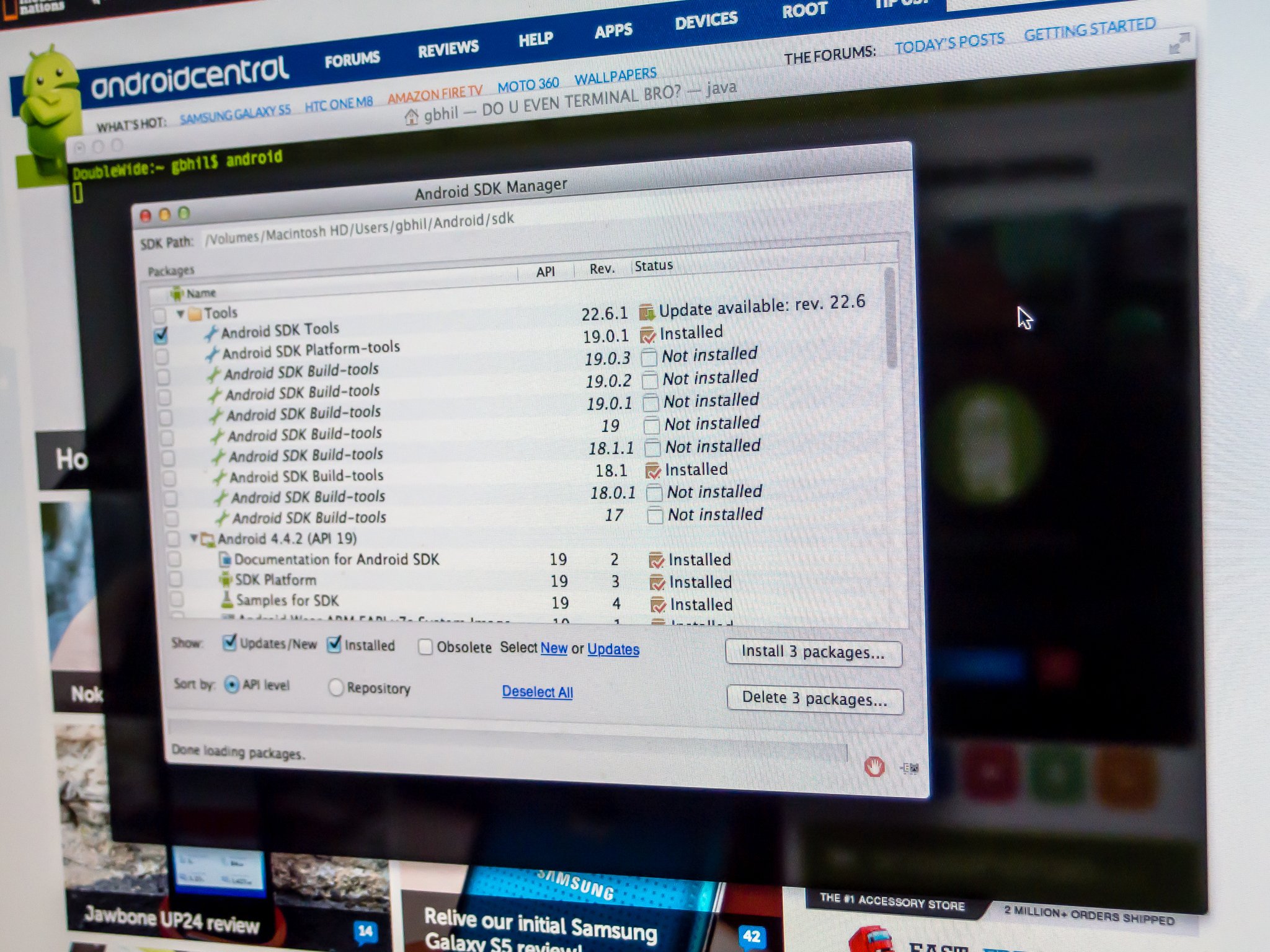- Using Android Sdk Windows Files For Mac
- Using Android Sdk Windows Files For Mac Free
- Android Sdk For Mac

Hi, I recently installed Android Studio and wanted to test some accelerometer-related stuff using my old Nexus S. The problem is that Unity doesn't find the SDK and if I manually try to assign the directory, it is not accessible.
Using Android Sdk Windows Files For Mac
In fact, the sdk folder is.inside. the Android Studio.app and can't be accessed through Mac OS file manager (greyed out as seen on the image below). Is there any way to fix that or do I have to install the SDK twice on my mac?.EDIT 1. It doesn't work on Windows either. Unity doesn't recognize the sdk folder. Open the Terminal program, this is the only command line you will need sudo ln -s /Applications/Android Studio.app/sdk /Applications/AndroidSDK This will create a symbolic link in Applications called “AndroidSDK” (you can change this to be whatever you want) that actually links to the SDK that’s within the Android Studio application. Now in Unity in the Preferences under the main Unity menu you will find the option to browse to the Android SDK in External tools.
Jun 27, 2017 - The android.jar files containing the Android framework library itself are. In real life, I use the same SDK library for Windows, Mac and Linux. As the Android SDK is present on all major Desktop Operating Systems (Windows, Mac and Linux), we have provided links for downloading Android SDK Tools / Command Line tools on all of these. Download SDK Tools for Windows: sdk-tools-windows-3859397.zip.
Using Android Sdk Windows Files For Mac Free
Browse to the newly created link and select it as your Android SDK and now you’re ready to publish to Android from the Mac using only the new Android Studio IDE. Open the Terminal program, this is the only command line you will need sudo ln -s /Applications/Android Studio.app/sdk /Applications/AndroidSDK This will create a symbolic link in Applications called “AndroidSDK” (you can change this to be whatever you want) that actually links to the SDK that’s within the Android Studio application. Now in Unity in the Preferences under the main Unity menu you will find the option to browse to the Android SDK in External tools. Browse to the newly created link and select it as your Android SDK and now you’re ready to publish to Android from the Mac using only the new Android Studio IDE. You could try to use the 'Go to folder' functionality in the browse dialog that Unity opens.
Default shortcut is Command+Shift+G. There you can enter the path to the SDK, which at time of writing is /Users//Library/Android/sdk/ Of course, replace with your OS X username. The 'Go to folder' dialog has rudimentary Tab-completion which could help you getting the path written correctly. You can also drag a file or folder into the 'Go to folder' dialog from a Finder window to get the path.
How do I update the Java Development Kit (JDK) version?. 2 minutes to read. Contributors.
In this article This article illustrates how to update the Java Development Kit (JDK) version on Windows and Mac. Overview Xamarin.Android uses the Java Development Kit (JDK) to integrate with the Android SDK for building Android apps and running the Android designer. The latest versions of the Android SDK (API 24 and higher) require JDK 8 (1.8).
Alternately, you can install the. The Microsoft Mobile OpenJDK will eventually replace JDK 8 for Xamarin.Android development. To update to the Microsoft Mobile OpenJDK, see. To update to JDK 8, follow these steps. Download JDK 8 (1.8) from the:. Pick the 64-bit version to allow rendering of in the Xamarin Android designer:. Run the.exe and install the Development Tools:.
Open Visual Studio and update the Java Development Kit Location to point to the new JDK under Tools Options Xamarin Android Settings Java Development Kit Location: Be sure to restart Visual Studio after updating the location. Download JDK 8 (1.8) from the:.
Android Sdk For Mac
Open the.dmg file and run the.pkg installer: Mac OS will automatically set the new JDK version as the default by updating /System/Library/Frameworks/JavaVM.framework/Versions/Current. You can then double-check that the Java SDK (JDK) location is set to the expected default of /usr under Visual Studio for Mac Preferences Projects SDK Locations Android Locations Java SDK (JDK) Location: Feedback.